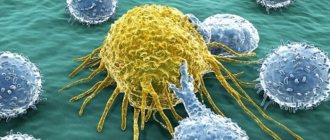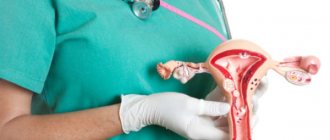Exactly how recovery occurs after an abortion directly depends on the specific method of termination of pregnancy. Also depends on the period at which such medical intervention was performed, and the general condition of the body. It is impossible not to take into account the medical factor: the quality of anesthesia, if the latter was administered, the level of the institution to which the patient applied. Aftercare matters too. Finally, psychological state directly affects health.
Abortion methods
Today there are three known ways to remove the fertilized egg from the uterine cavity:
- medicinal;
- mini-abortion;
- surgery.
The first one feels quite uncomfortable, but at the same time it is as gentle as possible. The essence of this method is to artificially simulate a miscarriage. Until a certain period (20 days from the moment of conception), the embryo does not yet have time to attach securely to the uterine cavity. In fact, there is no child at this stage; there is a fertilized egg located in the body. Its development is supported by a certain hormonal background of a woman. Forcibly blocking the corresponding substances leads to miscarriage. Recovery occurs over several months. But it often happens that physiologically a woman returns to normal even faster. Mini-abortion using modern equipment can be performed for up to 7 weeks. Using an aspirator, negative pressure is created inside, thanks to which the embryo is simply sucked out.
Minimal blood loss, absence of physical damage to the cervix, small amount of time required for the manipulation itself are positive aspects. All this becomes the reason that a woman, when turning to qualified specialists, receives less damage than during a surgical operation. But the period is later than the one at which a medical abortion occurs, and the nature of the intervention still requires at least two months for recovery. If after termination of pregnancy an inflammatory process begins or complications arise, this period increases.
Surgical intervention is carried out up to 12 weeks, according to Russian legislation, at the request of the woman. The procedure itself involves artificial dilatation of the cervix and curettage of the cavity with a sharp curette. Recovery depends both on the woman’s condition and on the doctor’s experience, since inept actions can lead to perforation of the uterus. Rehabilitation in this case will require a long time, since the internal genital organs were damaged. The average period is about six months.
How long does it take to recover after an abortion?
The period in which a woman can completely return to normal condition, first of all, depends on the quality of the abortion performed, on the patient’s condition before the termination of pregnancy and on the chosen method of rehabilitation.
Another decisive factor is the number of weeks the aborted woman was pregnant: the shorter the pregnancy, the faster the level of placental hormones produced by the body during pregnancy decreases.
It is unlikely that it will be possible to bring the body back to normal in the shortest possible time with expensive drugs. The speed of recovery directly depends on individual characteristics, physical and psychological health.
Full recovery of the body can be expected in six months, after which it will be possible to return to your usual lifestyle - playing sports, lifting weights, traveling and having children.
It is not recommended to plan pregnancy in less than six months.
Possible complications
Various complications delay the recovery process. Sometimes medical abortion or even vacuum aspiration does not bring the desired result: the embryo or its parts remain in the uterus. In this case, curettage is required, which in itself is traumatic in such a situation. The exact recovery time is predicted by the doctor treating and monitoring the patient. But often even an experienced gynecologist can only offer to monitor the condition, prescribe stimulants and restorative drugs. But if the doctor’s inept actions led to additional complications. Let's say the patient did not follow the prescribed recommendations: she visited the bathhouse, began to be sexually active prematurely, and suffered from excessive stress. Then further rehabilitation will most likely occur in the hospital, under medical supervision.
Abortion after childbirth
Abortion after childbirth also has its own specifics. Recovery is more difficult, largely because the body will most likely lose additional blood, and the cardiovascular system would not be worth stressing with anesthesia. However, the desire to endure pain will also hit the body, so doctors in such a situation are forced to offer the patient to choose the lesser of two evils. That is why obstetricians and gynecologists strongly recommend that young mothers use condoms when resuming sexual activity. To obtain greater guarantees, you can combine the barrier method with oral contraceptives.
Repeated abortion
Recovery after a repeat abortion slows down noticeably. The exact timing here depends on the general condition of the body, the ability to regenerate, and the woman’s age. With a good initial immune status, the return to normal occurs somewhat faster than might be expected. But you shouldn’t rely too much on the body’s potential to calmly endure peculiar experiments on itself. A woman can get sick, and during this period she is threatened by pathologies associated not only with the reproductive system. Quite often chronic diseases begin to intensify.
Psychological rehabilitation
Among other things, do not forget about the importance of psychological recovery. It is more difficult to make predictions here than in the case of physiology; each case is individual. Much depends on a woman’s upbringing; religion also plays an important role. The manifestation of reactions varies, some are deeply depressed, others go into a defensive position, and others ignore what happened to them. Some patients perceive what happened as murder. But even those who do not consider the fetus a child cannot rid themselves of the thought of negligence in relation to their own body.
A separate conversation concerns women who were forced to have an abortion for medical reasons, but wanted to keep the child. Often the subsequent period is accompanied by severe depression. Relatives do not always notice the signs of this disease quickly enough, before it becomes severe. In any case, doctors strongly recommend visiting a psychotherapist. Even if psychological recovery after an abortion occurs normally, it is advisable to verify this with the help of a specialist.
Abortion procedure
There is a list of general rules about what women should not do after an abortion, the points of which do not depend on the type of abortion chosen.
The general rule for all women is to cease sexual activity for a period of at least 21 days after surgery or a medical abortion. By continuing to be sexually active, a woman risks her health, since during this acute period of rehabilitation serious complications can arise, including death.
You can more accurately determine how long after an abortion you cannot have sexual relations by looking at your menstrual cycle. As soon as the first menstruation begins and ends after an abortion, they should not be confused with discharge during the post-abortion period; you can resume sexual activity, not forgetting about methods of contraception.
Another, no less important item on the list of things you can’t do after an abortion is lifting heavy objects. Doctors categorically prohibit women after an abortion from engaging in heavy physical labor, lifting heavy objects, or actively engaging in sports for at least two weeks.
For some time after an abortion, you should not take hot baths, go to a bathhouse or sauna, or swim in a pool or open water. To maintain hygiene standards, a woman is allowed to take a warm shower.
The rules of intimate hygiene must be observed with special attention, especially in the first days after an abortion, using a solution of boiled warm water and potassium permanganate several times a day. Underwear must be changed at least twice a day and must be made from natural materials.
For two weeks after an abortion, you should not take medications: Aspirin, Nurofen, Ketanov and Solpadeine.
Next on the list of what is not allowed after an abortion is nutrition. In no case should a woman follow strict and strict diets during the recovery period; nutrition must be complete and correct, only in this way can a depleted body replenish the need for vitamins and macroelements.
In the postoperative period, it is necessary to carefully monitor the condition of the body, regularly measure pulse, blood pressure and temperature, and if there are any deviations from the norm, do not postpone going to the doctor until later.
We suggest you read: Special physical therapy during pregnancy: What is useful and when can you do it?
Since during this period the risk of inflammatory processes in the pelvis is especially high, a woman must monitor the timely emptying of the intestines and bladder; cramps in the stomach are absolutely forbidden.
The whole process can be divided into three stages. The first is preparatory, the second is direct vacuum abortion, the third is restorative or postoperative.
The patient consults with the treating gynecologist, who recommends abortion (forced or voluntary), diagnoses the stage of development of the fetus, and gives a referral for tests to determine the general state of health and limiting or recommendatory factors. The doctor chooses the method of performing a vacuum abortion.
During the procedure, the woman is placed in a gynecological chair, the entrance to the vagina and its walls are protected with an antiseptic. For a girl who has not given birth, a metal dilator is inserted into the cervix of the uterus (there is no such need for a woman who has given birth) and a special drug, then the area is anesthetized and a tube with an electric suction is used.
It creates a certain pressure directly in the uterus, while the tube is carefully drawn around the diameter of the cavity, touching the mucous membrane. In this way, the egg is removed under pressure. Patients after a vacuum abortion are recommended to be monitored by doctors. At this stage, cramps may occur, but more often - nausea, increased sweating, and weakness. If there are no complications, the woman is sent home.
No later than three weeks later, a re-examination with ultrasound is recommended.
Abortion remains one of the most dangerous operations in gynecology. But proper preparation will avoid complications.
Analyzes
Today, there is a basic list of tests for any fetal expulsion. It is important to understand that more in-depth research is always more reliable. A serious approach to this problem gives the best results.
What tests need to be taken for an abortion:
- blood for the content of human chorionic gonadotropic hormone;
- blood test for Rh and group;
- PCR (test for the presence of hidden infectious processes);
- general laboratory blood test;
- blood biochemistry;
- smear to assess the flora of genital secretions;
- for syphilis, HIV (human immunodeficiency virus), etc.;
- smear from the cervical canal;
- bacteriological culture of vaginal flora;
- general urine examination;
- detailed coagulogram;
- ultrasound diagnostics;
- fluorography.
The study provides an objective assessment of the internal organs. Ultrasound-guided interruption significantly reduces the possibility of complications.
Ultrasound examination allows you to determine:
- ectopic pregnancy;
- adhesions;
- tumors;
- cysts;
- exact date;
- analyze the features of the anatomical structure of the internal genital organs;
- assess the condition of scars on the uterus.
Doctors consultation
Before expulsion, a woman should make an appointment with a gynecologist. Try to listen to the doctor’s recommendations as much as possible; any information will be useful to you. If you are being seen by other specialists, then contacting them will also not be superfluous. It is important to understand the state of the body as a whole.
Sometimes it is worth using the services of a psychologist to help yourself mentally. If you feel confident and are not stressed, then these visits are not necessary.
Before undergoing a medication abortion, it is recommended that you avoid eating heavy food on the day of your clinic visit. You can get by with a snack or come on an empty stomach. It is not recommended to drink alcohol several days in advance, and not to smoke on the day of the procedure. The medicine is better absorbed when at least two hours have passed since the last meal.
The procedure may cause abdominal cramps and heavy discharge, so it is not advisable to undergo physical activity for a while. Just in case, you should buy painkillers at the pharmacy.
Preparations for vacuum aspiration or cleaning of the uterus begin in advance. If a sexually transmitted infection or an acute stage of an infectious disease is detected, the procedure is postponed.
In this situation, treatment is necessary because inflammation in the uterine cavity and other complications may occur.
A few days in advance it is recommended:
- not be sexually active;
- carry out sanitation (treatment with antiseptic agents) of the vagina;
- remove hair in the groin;
- remove jewelry in the intimate area.
Before a surgical abortion, you should eat only light food and avoid drinking alcoholic beverages. If general anesthesia is provided, it is prohibited to take any food or drink. It is important to follow this regime so that everything goes well and safely.
Getting rid of the fetus can serve as an impetus to never become pregnant again. Every woman should take this decision seriously and take into account all the nuances.
Indications
Indications for drug interruption:
- Intrauterine pregnancy confirmed by a specialist. For this, the patient is sent for an ultrasound.
- Gestation period less than 6 weeks, unwanted pregnancy.
- The patient’s refusal to continue pregnancy and the desire to interrupt the development of the embryo.
- The woman has no contraindications to medical abortion.
Indications for mini-abortion:
- pregnancy fading;
- allergies to medications;
- ineffectiveness of previously administered drug interruption;
- uterine bleeding;
- growth of tumors and neoplasms of the reproductive organs;
- hematometra (accumulation of blood in the uterine cavity);
- serozometer (fluid accumulation in the uterus).
It must be said that vacuum cleaning has its use not only during abortion, but also in other situations. It is sometimes used for therapeutic purposes, such as to remove the placenta after childbirth or excess endometrium due to endometriosis.
Indications for surgical termination:
- cardiovascular pathologies in women;
- tuberculosis;
- oncology at any stage;
- severe diabetes mellitus and diabetes insipidus;
- genetic abnormalities in the fetus;
- abnormal formation of internal organs in a child;
- toxic poisoning and radiation exposure;
- serious illnesses in a pregnant woman;
- syphilis and other sexually transmitted diseases.
In addition to the main list, abortion is also permitted for social reasons. Sometimes women are hesitant to have children without a man. We cannot exclude cases where the child was conceived as a result of rape. Also, interruption sometimes occurs due to an incorrect lifestyle, which ultimately affects the child.
How it happens
For medical abortion use:
- mifepristone with prostaglandin;
- methotrextate with prostaglandin;
- misoprostol (sometimes with methotrexate).
Mifepristone and prostaglandin are used alternately - every 24 hours. These drugs are inserted into a woman's vagina - side effects are possible.
We suggest you read: Omez in early and late pregnancy, can pregnant women take the drug?
Methotrexate is given intramuscularly, and then 5 days later prostaglandin is administered vaginally. The effectiveness of the procedure is 90%. The disadvantage of this method is the long period of time between the administration of methotrexate and complete abortion. The process can last up to several weeks.
Misoprostol can be used either alone or with methotrexate. This drug comes in tablets and is taken orally. Using misoprostol alone statistically results in complete abortion. It is safer to use it in the early stages.
During a mini-abortion, the contents of the uterine cavity are completely drawn out with a special syringe on an outpatient basis using local anesthesia. After an abortion, there will be a slight increase in temperature for the first 2-3 days. This reaction of the body is considered normal.
Pain in the lower abdomen and swelling in the vaginal area are also possible. These manifestations are temporary - up to 3 days.
With the surgical method of abortion, the egg is scraped out along with the mucous membrane from the uterus. Surgical termination occurs under general anesthesia. The doctor waits for the anesthesia to take effect, dilates the patient’s cervical canal, secures the cervix, and only then performs the abortion procedure itself—curettage.
Stages of recovery
To avoid dangerous consequences after an abortion, the patient must abstain from intimate sex for 4-5 weeks. Deviation from this recommendation is fraught with complications.
- The body is especially vulnerable after the curettage procedure. Intimacy during such an unfavorable period can lead to severe bleeding and rejection of particles of the uterine mucosa. Such troubles occur due to infection in the injured uterine body.
- It is highly recommended not to lift heavy objects. You should also not take a bath or swim in an open pond or swimming pool. This is a direct route to contracting a dangerous infection. It is better to postpone such water procedures until better times.
- After the stressful situation of having an abortion procedure, it is important to eat well. The diet should consist of fresh vegetables and fruits, fish, lean meats, nuts, and dairy products. Protein and fiber are the basis for proper menu construction. Healthy food helps speed up the rehabilitation period and will return lost strength.
- You also need to listen to yourself and not ignore any suspicious symptoms. These include: fever, excessive bleeding, chills, severe weakness, persistent aching pain. Sports lovers should take care. It is forbidden to visit the gym for a month. The body is significantly weakened, the abdominal muscles need rest and time for complete recovery.
- Drinking any alcoholic beverages is strictly contraindicated. Especially in the case of drug therapy. At the slightest pathological manifestations, you should urgently seek medical help.
Recovery after medical abortion
In another way, such termination of pregnancy is called hormonal and is carried out in the early stages (up to 6 weeks) using medications that cause spontaneous miscarriage. Such drugs belong to different pharmacological groups and affect the contractile activity of the uterus and the production of hormones that support the course of pregnancy. Under the influence of these medications, the uterus begins to contract intensively, the production of hormones decreases, as a result of which the fertilized egg dies and a miscarriage occurs.
To ensure that recovery after a hormonal abortion goes without complications, there are certain rules:
- you need to try to avoid stress, eat right and rest well;
- to reduce pain after an abortion, women take medications, but only after agreeing with their doctor, as they can weaken the immune system;
- a special diet will help saturate the body with vitamins and microelements;
- it is necessary to abstain from sexual activity for a certain time in order to avoid infection and re-pregnancy;
- it is necessary to monitor the peculiarities of the menstrual cycle and the nature of the discharge, and if after 2 months it does not recover, correction of hormonal levels will be required.
If you follow all these recommendations, you can avoid quite serious complications.
Uterine body
The uterus is an organ that is seriously affected during the abortion procedure. The longer the gestation period, the more damage to the uterus. Curettage has the most negative impact on the condition of the organ. After removal of the fertilized egg, the uterine body slowly contracts. Gradually, over the course of several days, it acquires its original size. The endometrial layer is damaged, the uterine walls are injured. It takes time for everything to heal and return to generally accepted norms. It is believed that the condition of the uterus is completely restored within 4-5 weeks. When the menstrual cycle resumes, it functions normally again.
The internal mucous membrane of the organ also meets the parameters. After one or two weeks, a visit to your attending gynecologist is required. Inspection is very important. If there is copious discharge mixed with blood and mucus, then an inflammatory process is occurring. It is possible that fetal particles remained in the uterine body after cleaning. Therefore, to avoid misunderstandings, an ultrasound is always performed. Based on its results, the doctor determines whether there are abnormal abnormalities and the cleanliness of the uterus. Then he prescribes restorative procedures.
What to take with you
After your doctor's recommendations, you should collect the necessary list of supplies.
Important
If the decision is made finally, then after the first contact with a medical professional, 2–7 days will pass before the procedure.
You must take with you the following list of documents:
- conclusion of ultrasound diagnostics;
- all tests;
- medical card;
- passport;
- medical insurance;
- a coupon or referral for an abortion.
The following supplies will also be needed for the procedure:
- indoor shoes;
- socks;
- intimate hygiene products;
- sheet;
- towel;
- napkin for placing under the back;
- large gaskets;
- underpants.
Perhaps this entire list will not be useful, but you need to take the basics. The main thing is not to forget important accessories to avoid inconvenient situations. In rare cases, you are asked to buy and bring several disposable gynecological speculums and sterile gloves for the surgeon.
Additional
Essential items to increase your comfort level that you should take with you during an interruption:
- change of clothes;
- cosmetics;
- sanitary napkins;
- sweets;
- still water;
- painkillers;
- book or magazine.
The woman also takes her own set of useful items, which helps her feel confident and calm.
Menses
How to recover faster after an abortion, what should you do first? These questions concern every woman who has undergone a procedure to get rid of the fetus. A period of time is required for normal processes to resume. For example, it takes about a month for menstruation to occur. The same time is required to restore the uterine body and endometrial layer. After an abortion, the functioning of the hormonal system is disrupted. Stops producing both luteinizing hormone and stimulating follicle production. It is impossible to determine exactly when menstruation will resume. Each case is individual, it all depends on a combination of factors. On average, the menstrual cycle resumes a month after the intervention. In case of surgical curettage, recovery will take a little longer. Particular attention should be paid to the nature of the discharge over several months. The cycle may become longer.
- Excessively heavy and prolonged periods after an abortion are an alarming sign.
- Too scanty menstruation is also a pathology. It is better to consult your attending gynecologist.
- There are several reasons for weak discharge. Starting from hormonal imbalance, endometrial damage and ending with problems with the pituitary gland.
- In most cases, these are the consequences of a pill abortion.
- If your periods are scanty or too heavy, you should urgently visit a doctor. He will give you a referral for a medical examination. Then he will individually select a therapeutic method.
What symptoms require you to see a doctor?
If the following signs appear, do not hesitate, but consult a doctor:
- severe bleeding with clots;
- discharge with a strong odor;
- high temperature that does not go down even with medications;
- severe abdominal pain;
- nausea, fainting, dizziness.
Recovery after an abortion proceeds in different ways, but the main thing is that the woman devotes as much time as possible to her health. Two weeks after the procedure, minor physical activity is recommended.
Do I need to protect myself?
What to do, how to restore the body after an abortion? As already mentioned, the main rule is complete abstinence from sex for at least 4-5 weeks. After the patient can be sexually active, contraception should be used. This is necessary, since ovulation often occurs in the first cycle after an abortion. A woman needs to protect herself from unwanted conception. In the first months after the procedure, the body is weakened. The rehabilitation period lasts at least six months. If you shorten the recommended period, there is a high risk of pathologies occurring during pregnancy. Taking oral contraceptives is an excellent solution to the problem at this stage. Birth control pills have a positive effect on the hormonal system. They also prevent possible neuroendocrine disorders.
Self-administration of any medications is unacceptable. Even if the patient had previously taken a certain type of pill. The doctor prescribes birth control pills that contain little hormones. This is due to hypercoagulation in several cycles. Estrogen hormones have the ability to increase blood clotting. The drugs are taken on the day of abortion. Tablets such as Regulon, Mercilon, etc. are prescribed. The day of administration is considered the day the new cycle begins.
General recommendations
In order for recovery after an abortion to be successful and without complications, it is necessary to abstain from sexual activity for 3 weeks. Sexual incontinence after surgery is very dangerous, as there is a high probability of various complications, such as rejection of the uterine lining or bleeding. This is caused by an infection that enters the body during sexual intercourse.
Physical health usually takes 2 weeks to recover after an abortion, and during this period exercise is contraindicated. This is necessary to ensure that the abdominal muscles are at rest. Lifting heavy objects is also prohibited. Successful physical recovery reduces the risk of complications.
In order to protect against infection or bacteria entering the body, it is necessary to refrain from swimming in a bathtub, pool or open water for a while.
An important factor after the procedure is proper nutrition. Abortion is a great stress for the body, so you should saturate it with microelements and vitamins, as well as fiber and proteins. It is also necessary to periodically measure body temperature, pulse, and blood pressure. Any deviation of the body from the normal state indicates the beginning of complications, so you should visit a doctor as soon as possible.
Quite often, recovery of the body after an abortion requires taking antibiotics. In this case, you should not drink alcohol.
What factors influence rapid recovery?
Abortion is a serious intervention in a woman's body. As after any operation, it takes time for the reproductive system to fully recover. To do this, you need to strictly follow a special scheme developed by your gynecologist. Many people underestimate the danger of the abortion procedure. After termination of pregnancy, you must be under medical supervision. This is mandatory, this way you can prevent an undesirable turn of events. It is no secret that after an abortion there are often complications that negatively affect life in the future. You cannot ignore persistent aching pain in the lower abdomen, excessive discharge with blood clots, etc. The fact of excessive delay in menstruation should alert you. Any pathology should not be ignored. A timely visit to the doctor will speed up recovery after an abortion. He will determine the cause of your poor health and select the appropriate treatment.
The duration of rehabilitation depends on the presence of chronic diseases in the patient. Heredity also plays an important role. It is important to consider exactly what method was used to remove the fertilized egg. With mini-abortion or vacuum aspiration, a relatively quick recovery is observed. And with medical or surgical curettage, rehabilitation after an abortion is delayed.
The fact is that the gestation period is also important during the procedure. If conception was interrupted at the very beginning of gestation, this will not have much effect on the body. Of course, you should go to a good clinic. Much depends on the degree of qualification of the operating doctor and on the effectiveness of the prescribed physiotherapy. It is not easy to decide to have an abortion, so you need to psychologically prepare yourself in advance. Age category is an important aspect. Rehabilitation for a young girl will be easier than for an adult woman. But youth is not a guarantee that infertility problems will not arise in the future.
How to get directions
Expulsion is a difficult ordeal for a woman and stresses her body. Before such an intervention, it is important to undergo a number of necessary examinations.
Early
Currently, optional termination is performed up to the 12th week of gestation. If for social reasons - until 22.
You can get a referral in the first trimester:
- having decided on a treatment center;
- having consulted a gynecologist;
- having completed the necessary research;
- having passed the tests.
It would also be a good idea to get checked for chronic diseases. If they are, the doctor will prescribe additional examinations.
At a later date
According to statistics, late abortion accounts for about 15% of all abortions. Doctors unanimously believe that the earlier the operation is performed, the less likely it is to develop all kinds of complications.
First you need to decide on a treatment center. In a government institution, “silent hours” are given so that the woman can think again after the examination.
If prescribed by a doctor, you will also need to undergo:
- electrocardiography;
- tissue puncture;
- ultrasound examination of the kidneys and liver;
- magnetic resonance imaging;
- computed tomography.
Why does my stomach hurt after an abortion?
In principle, aching pain in the lower abdomen after the procedure is considered normal. Usually this condition lasts 5-7 days. If the pain causes severe torment that is difficult to endure, immediately consult a gynecologist. Such complications do not arise out of the blue; there are reasons.
- Persistent pain accompanied by an increase in temperature is a reason to be wary. This is how the onset of inflammation, which arose against the background of a latent infection, makes itself felt.
- If during the first 2-3 days the temperature remains at 37.5 and does not decrease, this is very dangerous. You need to seek medical help as soon as possible.
- Pain similar to contractions is a sign of hematometra formation. Or they say that embryonic particles remain in the uterus.
To avoid the development of inflammatory processes after an abortion, a course of antibiotics is prescribed. This is a prerequisite for prevention for those who previously had not very good smear, blood, etc. indicators.
What complications may arise?
After an abortion, negative consequences can be expected. For example, part of the fertilized egg remains in the uterus, so the doctor cleanses it, which leads to additional damage to the lining of the uterus and its cervix. This provokes bleeding, which requires urgent hospitalization. In addition, the presence of remnants of fetal parts in the uterine cavity creates a favorable environment for the development of infection. When injuries to the mucosa without treatment, salpingitis, endometritis or purulent inflammation occurs.
Expert advice
Recovery after a miscarriage plays a key role in the future. If the patient follows all the recommendations, this is a big plus for the reproductive system. It is important at first to protect yourself from hypothermia, do not sit in the cold, do not walk in the rain. Complete rest will help you gain strength. A balanced diet will restore your energy. You should take a shower several times a day to avoid bacterial infection. Hot baths are strictly contraindicated; they can cause bleeding. Don't forget to change sanitary pads every 2-3 hours. Since bloody discharge, when it solidifies, is a source of infection.
Tampons are strictly prohibited. Their use can cause an acute inflammatory process in the uterine cavity and other dangerous pathologies. It's better to put tampons aside until better times. It is necessary to strictly follow all the advice of doctors and gradually recover.
Use of contraception
To avoid unwanted pregnancy after an abortion, it is necessary to choose the right means of contraception. The best option is the use of tablets, which, among other things, eliminate the consequences of hormonal imbalance and protect against endocrine disorders. Thanks to birth control pills, the risk of inflammatory processes is sharply reduced. In addition, these contraceptives help:
- reducing the amount of blood released, which can become a source of development of pathogenic microflora;
- reducing the activity of uterine contractions, so that pathogens cannot penetrate from the uterine cavity into the tubes;
- thickening of cervical mucus, which serves as an obstacle to infection.
The most effective are considered to be tablets containing a small amount of hormones, since the estrogens included in the drug help increase blood clotting.
What happens after a vacuum abortion
After an interruption, gradual changes occur in the functioning of the whole organism. After a while, all systems return to normal operation. During this period, you should carefully monitor your health. It is advisable to avoid heavy physical activity, hypothermia and observe sexual rest for 21 days.
The menstrual cycle may be disrupted (it occurs in approximately 12% of women), it becomes irregular, and there is bleeding between periods. The menstrual cycle returns to normal after a few months.
Also, the woman’s psyche becomes more sensitive. And to make it easier to overcome psychological problems, you need the help and support of loved ones - friends, relatives and husband. Kind words from loved ones are the best medicine.
Complications after a vacuum abortion are possible, but not necessary. Mostly found in women who have undergone similar manipulations more than once.
An inexperienced doctor may accidentally perforate the uterus, causing severe pain.
After the procedure, bleeding is possible due to a polyp that has formed in the placenta, which the doctor did not completely remove. It happens that the fruit has not peeled off from the wall, and therefore continues to develop.
Infection
Late complications after abortion
- Discharge from the genitals. Normally, they will be bloody for three to seven days. It is worth carefully monitoring their quantity, color and smell. Changes in these parameters indicate the development of complications.
- Inflammatory diseases may appear within 3-5 days.
- Pathological changes in the menstrual cycle.
- Hormonal imbalance.
- Psychological disorders.
- The risk of ectopic pregnancy, miscarriage and infertility increases.
The reasons for the development of infertility after an abortion are:
- Obstruction of the fallopian tubes as a manifestation of inflammatory diseases with the development of adhesions.
- A hormonal disorder leading to the formation of an anovulatory cycle or a lack of progesterone, which is responsible for the development and maintenance of pregnancy.
- Structural changes in the endometrium that prevent implantation of the fertilized egg.
Medicines for pain after abortion
To relieve pain and speed up contraction of the uterine muscles, patients are additionally prescribed a number of medications.
No-Shpa
Hungarian medicine, the main active ingredient is Drotaverine. Also contains magnesium stearate, povidone, talc, corn starch, lactose. Release form: tablets, injections. A type of medication is No-Shpa forte. The difference from the regular format is the increased content of the active substance. After an abortion, take two tablets three times a day. Injections are administered one capsule three times a day. The course of treatment is no more than two days.
Drotaverine
Domestic antispasmodic. The active substance is similar to the name of the drug. Take one tablet twice a day.
Tranexam
Country of origin: Russia. Available in tablets of 250 milligrams of tranexamic acid. It has an anti-inflammatory effect, helps to cope with bleeding faster. Take a tablet every three hours until bleeding stops.
Restoration of the menstrual cycle
Termination of pregnancy is a severe stress for the body, therefore, after an abortion, the regulation of the functions of the ovarian-menstrual cycle is disrupted. Due to the significantly increased load on all organs during gestation, the hypothalamus is in a state of excitement, which affects the work of the pituitary gland, which ceases to synthesize gonadotropins (FSH and LH) in the required proportions.
And instead of the periodic release of luteinizing hormone, characteristic of the normal menstrual cycle, its monotonous increased secretion is noted, as a result of which the ovaries enlarge and begin to synthesize estrogens. But with the physiological completion of pregnancy, all changes that occur disappear without consequences for health.
- insufficiency of the luteal (phase 2) cycle;
- secondary polycystic ovary syndrome;
- hyperplastic processes of the endometrium;
- uterine fibroids;
- syndrome or Itsenko-Cushing's disease.
The listed pathology is caused by excess production of LH after its previous monotonous secretion, so the restoration of ovarian-menstrual function sometimes takes more than one month, in some cases several years.
How many days after an abortion will menstruation begin is difficult to answer, it depends on a number of factors:
- woman's age;
- existing chronic diseases;
- method of abortion;
- gestational age when the abortion was performed;
- during the postoperative period.
Normally, a healthy and young woman should begin her period after an abortion in about a month, or rather, after the period of time that lasted from the previous menstruation to the current one. To calculate the approximate date of the first menstruation after the procedure, the starting point (the first day of the cycle) should be the day of the abortion.
However, artificial termination of pregnancy can not only lengthen or shorten the duration of the menstrual cycle, but also change the nature of the discharge. It is possible that scanty, spotting discharge may appear after an abortion, which continues for one to two menstrual cycles and is associated with incomplete restoration of the endometrium after the procedure.
If scanty menstruation persists for a longer time, this is a reason to consult a doctor, as well as for an extensive examination. A decrease in menstrual blood loss may be due to two reasons.
- The first is a functional failure in the production of hormones by the ovaries, pituitary gland and hypothalamus. Often, a similar condition is observed after a medical abortion, which is associated with taking very large doses of antiprogestins and requires the appointment of appropriate hormonal therapy.
- The second reason is mechanical damage to the endometrium (overly “thorough” scraping of the mucosa and traumatization of its deep layers) and/or the cervix (cervical canal atresia). When the endometrium is injured, synechiae (adhesions in the pelvis) are formed in the uterine cavity, which reduce not only its volume, but also the area of the endometrium, which is rejected during menstruation.
In addition to opsomenorrhea (scanty menstruation), amenorrhea and infertility may occur. Intrauterine synechiae requires hysteroscopic dissection.
If your periods after termination of pregnancy become heavier and repeat for several cycles, you should also be wary. Heavy and prolonged menstruation may indicate:
- or about the development of endometrial hyperplasia
- or about adenomyosis (endometriosis of the uterus).
And although menstrual flow after an abortion can be restored immediately, that is, it begins after 21–35 days, ovulation may be absent for two to three menstrual cycles, which is considered normal. If anovulation lasts longer, but there are no visible cycle disorders, you need to start looking for the cause of this pathology.
Sex and pregnancy after abortion
After an abortion, it is recommended to abstain from sex for at least 3 weeks. The fact is that after an abortion, the inner surface of the uterus is an extensive wound surface, very vulnerable to any infection. During sex immediately after an abortion, the likelihood of infection increases significantly, which can cause serious complications.
Another reason for limiting sex after an abortion is the high probability of another pregnancy.
Unfortunately, no method of contraception currently provides a 100% guarantee, and until the frequency of the menstrual cycle has been established, the likelihood of pregnancy after an abortion is high, even if the woman considers these days to be “safe.”
Pregnancy immediately after an abortion is very dangerous for the body, which has not yet had time to recover. In addition, a fertilized egg that attaches to fresh scar tissue will receive little nutrition.
Types of medical abortions
- The drug method is used when the period is no more than 7 weeks.
- Surgery is performed between 7 and 13 weeks of pregnancy. The latter is divided into two types: vacuum and curettage. The vacuum method is safer.
- It is worth noting that medication is also gentle.
But it should immediately be noted that self-administration of such drugs is fraught with complications, after which it is necessary to use vacuum aspiration. Curettage is used up to 5 months. The last method of abortion is distinguished not only by the complexity of its implementation, but also by the number of possible complications.
Symptoms of complications after abortion: early and late
Signs of complications after an abortion are different depending on whether we are talking about early or late symptoms.
As for the early signs, they will be as follows:
- Firstly, such complications arise during the surgical intervention itself or a short period after it. Most often this is bleeding;
- Another sign is pain in the lower abdomen, which is nagging in nature;
- Increased body temperature;
- Weakness and the appearance of bloody discharge mixed with pus from the woman’s genital tract.
Complications that can be observed in a woman in the early period are also inflammation of the peritoneum, which is called peritonitis, uterine perforation, puncture of the uterine wall, inflammation (adnexitis and endometritis).
Complications and consequences of late-term abortion include hormonal disorders, infertility, miscarriage of a subsequent pregnancy, endometriosis, aggravation of acute processes in the pelvis, problems with the course of a subsequent pregnancy. Late complications of abortion tend to appear a year after the operation or even later. The causes of such consequences are considered to be the appearance of adhesions in the uterine cavity and changes at the hormonal level. Manifestations of late complications are also considered to be:
How to recover psychologically after an abortion?
Artificial termination of pregnancy is accompanied by a complex of mental disorders called post-abortion syndrome (PAS). A woman is often haunted by memories of the procedure she underwent, and intense mental pain arises associated with the circumstances of the incident. Because of this, many people need the help of a specialist. Psychological recovery after an abortion should be carried out with the direct participation of a psychologist who will give the woman specific advice and prescribe medications if necessary.
A woman can try to ease her well-being on her own. Psychologists advise following a few simple steps:
- Forgive yourself out loud.
- Be in society more often, don’t isolate yourself.
- Talk to your spouse, partner.
- Contact the church.
Preparation for the procedure
Abortion remains one of the most dangerous operations in gynecology. But proper preparation will avoid complications.
Analyzes
Today, there is a basic list of tests for any fetal expulsion. It is important to understand that more in-depth research is always more reliable. A serious approach to this problem gives the best results.
What tests need to be taken for an abortion:
- blood for the content of human chorionic gonadotropic hormone;
- blood test for Rh and group;
- PCR (test for the presence of hidden infectious processes);
- general laboratory blood test;
- blood biochemistry;
- smear to assess the flora of genital secretions;
- for syphilis, HIV (human immunodeficiency virus), etc.;
- smear from the cervical canal;
- bacteriological culture of vaginal flora;
- general urine examination;
- detailed coagulogram;
- ultrasound diagnostics;
- fluorography.
Ultrasound
The study provides an objective assessment of the internal organs. Ultrasound-guided interruption significantly reduces the possibility of complications.
Ultrasound examination allows you to determine:
- ectopic pregnancy;
- adhesions;
- tumors;
- cysts;
- exact date;
- analyze the features of the anatomical structure of the internal genital organs;
- assess the condition of scars on the uterus.
Doctors consultation
Before expulsion, a woman should make an appointment with a gynecologist. Try to listen to the doctor’s recommendations as much as possible; any information will be useful to you. If you are being seen by other specialists, then contacting them will also not be superfluous. It is important to understand the state of the body as a whole.
Sometimes it is worth using the services of a psychologist to help yourself mentally. If you feel confident and are not stressed, then these visits are not necessary.
Types of pelvic ultrasound after abortion
What kind of ultrasound is done after an abortion:
- With 1 sensor. Either a transvaginal or transabdominal examination method is used. In the first case, the sensor is inserted into the vagina and the condition of the pelvis, soft tissues, uterus and ovaries is determined. Such diagnostics are carried out only after a month, because there are discharges that may interfere with the study.
- With 2 sensors. The combination of transvaginal and transabdominal methods allows you to obtain reliable information about the condition of the woman’s reproductive organs. In this case, the examination is first carried out through the abdominal wall using a thick nozzle. A thin device is then inserted into the vagina. Before this, a condom is put on it and lubricated with conductive gel, so the procedure is devoid of discomfort.
- Using a rectal sensor. It is carried out to examine the uterus when other methods become unavailable. This method is used in rare cases, because the procedure brings discomfort.
The transabdominal method involves diagnostics through the abdominal wall. This method is less informative, but it can be used already in the first few days after termination of pregnancy.
Effect on subsequent pregnancies
If the abortion proceeds with complications, then this may come back to haunt the woman with an unfavorable course of the subsequent desired pregnancy.
Firstly, in patients with inflammatory diseases of the female genital organs and adhesions in the pelvis, an ectopic pregnancy may occur after a complicated abortion. This happens because the fallopian tubes, as a result of inflammation, become tortuous, swollen, with kinks due to adjacent adhesions, and the movement of the egg through them is difficult.
If a fertilized egg enters the uterine cavity with chronic inflammation of the mucous membrane after an abortion, it may not fully attach to the wall of the uterus. This leads to missed abortion or bleeding and pregnancy loss. If the pregnancy takes root and develops further, then the placenta, attached to the defective wall of the uterus, may be thin and not provide nutritional function; ultrasound may describe oligohydramnios or polyhydramnios, and the child’s growth retardation.
If a woman’s abortion was complicated by perforation of the uterine wall, she now has a scar on the uterus. During pregnancy and childbirth, some scars on the uterus are incompetent (this is rare, but uterine rupture due to an incompetent scar does occur in late pregnancy and childbirth).
If during an abortion the dilatation of the cervix was carried out traumatically, then during the next desired pregnancy, cervical insufficiency (isthmic-cervical insufficiency) may appear. This is clinically manifested by signs of threatened miscarriage, premature dilatation of the cervix, and may result in miscarriage. Sometimes during pregnancy, cervical insufficiency must be corrected by applying a suture or installing a relief pessary.
If a patient with an Rh-negative blood group has an abortion from an Rh-positive partner, then Rh incompatibility with the unborn child may occur in her body during the next pregnancy. To prevent this complication, it is recommended that Rh-negative women always receive a dose of anti-Rhesus immunoglobulin during an abortion.
Long-term consequences
May be observed years after surgery:
After an abortion, there is always a risk of hormonal shifts, which may disrupt the menstrual cycle and the normal maturation of follicles in the ovaries. This, in turn, increases the risk of endocrine factor infertility.
The above-described inflammatory processes of the genital organs can lead to the development of adhesions and obstruction of the fallopian tubes (hereinafter referred to as tubal factor infertility). Inflammation of the uterine mucosa is also a common cause of menstrual irregularities.
Past inflammatory processes and the presence of adhesions in the pelvis can cause chronic pelvic pain syndrome in women, which is very difficult to correct.
The cervix, injured during an abortion, may not sufficiently perform a locking function during pregnancy. Due to cervical insufficiency, pregnancy losses may occur at various stages or create indications for surgical sutures on the cervix to preserve the pregnancy.
Rehabilitation period
After the procedure, the woman must follow a number of mandatory instructions:
- Visit a gynecologist. 7-10 days after the procedure, undergo an ultrasound examination of the pelvis. This is done in order to identify the remains of fetal parts/exclude their presence. If complications occur, such as bleeding, ultrasound is performed earlier;
- Visit to a mammologist. A specialist in this profile should also refer the patient for an ultrasound scan. In this case, the breasts should be checked;
- Consultation with an endocrinologist. The doctor will help the woman restore normal hormonal levels, regulate the menstrual cycle, and give recommendations on physical rehabilitation;
- Visit to a psychologist. Often, a visit to this specialist is required for women who had to terminate their pregnancy due to forced measures. Often such patients do not cope well with what happened. Against this background, they experience depression, stress, and nervous breakdowns. A qualified psychologist will give advice and help the woman recover on an emotional level.
Treatment of post-abortion complications
The recovery period after an abortion (treatment of complications): is it possible or not that it will be delayed? It depends on how severe the complication resulting from this operation is. Statistics on consequences after abortions in Syktyvkar and other cities indicate that complications after abortions are indeed treatable. However, the success of such treatment will depend on many factors, for example, the severity of the complication itself, the woman’s current health condition and the qualifications of the doctor who will carry out the treatment.
How can a woman herself recognize that there is fetal tissue left in her uterus after an abortion? The following signs usually indicate this:
- Painful sensations in the back;
- Visible tissue in the cervical canal;
- Painful sensations in the pelvis or abdominal area;
- Intense bleeding, which can lead to a state of shock (sticky skin, increased sweating, increased pulse, dizziness, lightheadedness).
The doctor may detect remnants of fetal tissue when examining the pelvic area. The uterus will be soft on palpation and there will be obvious pain.
Treatment after removal of residual fetal tissue can only be chosen by a qualified specialist. He must carry out ultrasound control in order to finally make sure that the uterus is truly cleansed. If persistent menstrual irregularities occur during an abortion, hormonal medications will be prescribed to normalize the cycle. If the woman still has an infection in her body, antibiotic therapy will be indicated.











